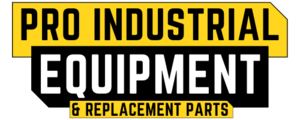When is fall protection required?
Most jurisdictions require the use of specific fall protection measures before, or in addition to, personal protective equipment (PPE). These measures generally include the use of some of the following:
- fixed barriers (e.g., handrails, guardrails)
- surface opening protection (e.g., covers, guardrails, etc.)
- warning barriers/control zones
- fall or travel restraint systems (i.e., a system to prevent a worker from falling from a work position, or from travelling to an unguarded edge from which the worker could fall)
- fall containment system (e.g., safety nets)
- fall arrest systems (i.e., a system that will stop a worker's fall before the worker hits the surface below)
There may also be specific legal requirements around use of equipment like ladders and scaffolding.
Occupational health and safety laws generally require action when a worker has the potential to fall about 3 metres (10 feet). In most cases, fall protection is required when:
- other means of fall protection are not available or possible, such as guardrails
- working at a height of 3 metres or more (permanent and/or temporary work areas)
- working at a height of less than 3 metres when the surface below could cause a greater injury than just the fall (e.g., machinery; risk of drowning in water or other liquid; open tanks, vats, or pits containing hazardous materials; materials that can shift)
- a worker may fall through an opening in the work surface
- it is determined that fall protection is necessary
What are the applicable standards for fall protection?
See below for the Canadian Standards Association (CSA) or American National Standards Institute (ANSI) standards that may acceptable in Canadian workplaces concerning fall protection. Other standards or other editions of that standard may apply. Standards are enforceable when adopted by law.
Always check the legislation in your jurisdiction to determine which specific standards are appliable for your area.
Certain CSA Group standards are available for online viewing. To access these, you must first create an account with “CSA Communities”.
- Go to: https://community.csagroup.org/login.jspa?referer=%252Findex.jspa
- Once you are logged in, click on the text below the “OHS Standards / View Access” graphic.
- Click on the jurisdiction of your choice to see the CSA Standards as referenced in that legislation.
Standards on fall protection include:
- Z259.1-05Body belts and saddles for work positioning and travel restraint (R2020)
- Z259.2.2-17Self-retracting devices
- Z259.2.3:16Descent devices
- Z259.2.4-15Fall arresters and vertical rigid rails
- Z259.2.5-17Fall arresters and vertical lifelines
- Z259.10-18Full body harnesses
- Z259.11-17Personal energy absorbers and lanyards
- Z259.12-16Connecting components for personal fallarrest systems (PFAS)
- Z259.13-16Manufactured horizontal lifeline systems
- Z259.15-17Anchorage connectors
- Z259.16-15Design of active fall-protection systems (R2020)
- Z259.17-16Selection and use of active fall-protection equipment and systems
- ANSI Z359.0 Definitions for Fall Protection and Arrest
- ANSI Z359.1 Safety Requirements for Personal Fall Arrest Systems, Subsystems and Components
- ANSI Z359.2 Minimum Requirements for a Comprehensive Managed Fall Protection Program
source: CCOHS https://www.ccohs.ca/oshanswers/hsprograms/fall%20protection_legislation.html

